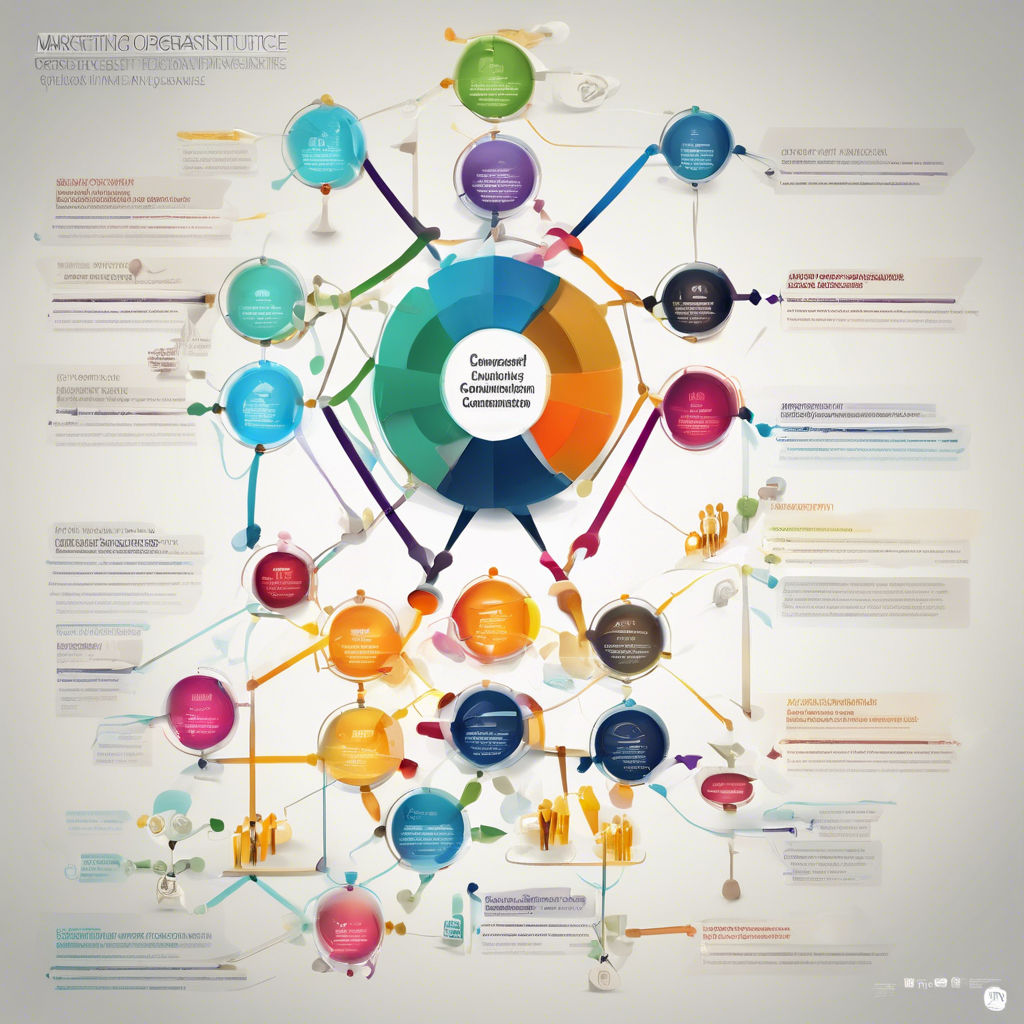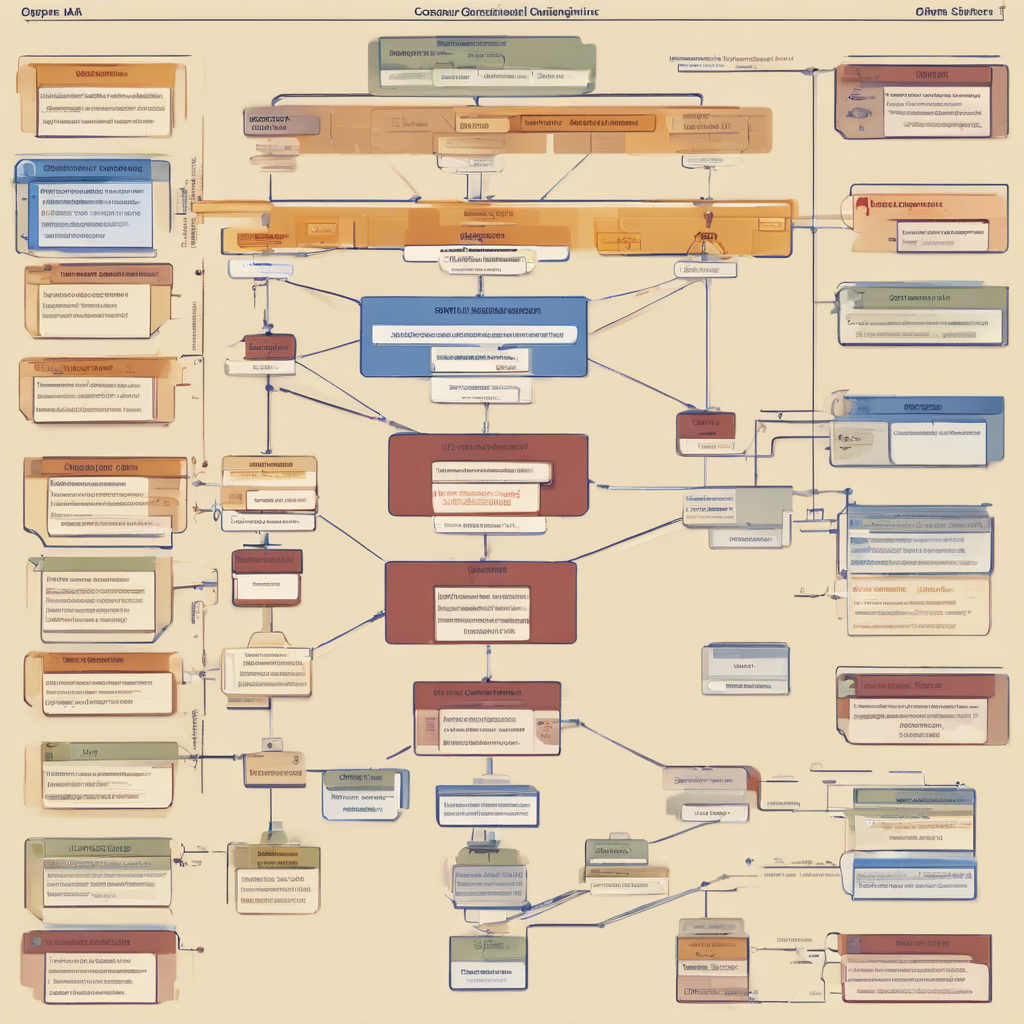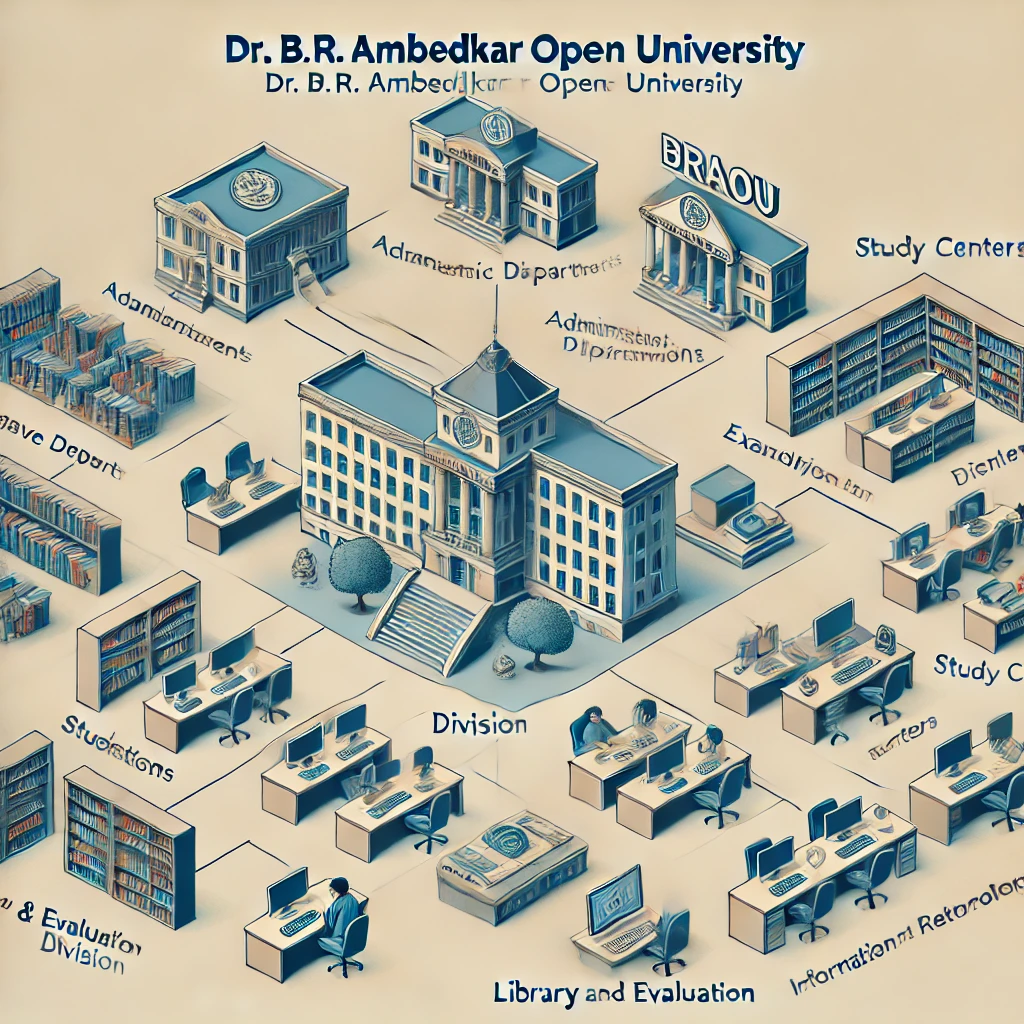Dr. B.R. Ambedkar Open University (BRAOU) is one of the premier institutions in India that provides distance education. It plays a crucial role in offering educational opportunities to those who may not have access to conventional institutions. One of the key aspects of understanding BRAOU’s operations is to comprehend its business organization. This article will delve into the structure, management, and functional aspects of BRAOU’s business organization, offering a comprehensive overview that can serve as a guide for students, educators, and administrators.
Understanding Business Organization

Business organization refers to the structure and management framework that dictates how a business operates. It encompasses the roles, responsibilities, and relationships among different parts of the organization, ensuring that the enterprise runs efficiently and effectively. In the context of BRAOU, business organization includes the management of educational services, administration, resource allocation, and the delivery of academic programs to a diverse student body across different locations.
The Structure of BRAOU

BRAOU’s organizational structure is designed to facilitate distance education effectively. This structure includes various departments and units that work together to manage and deliver educational services. The key components of BRAOU’s organizational structure include:
1. Academic Departments: These are the backbone of the university, responsible for designing, developing, and delivering academic programs. Each department focuses on a specific discipline, such as humanities, sciences, social sciences, or commerce. The faculty within these departments are responsible for curriculum development, research, and student support.
2. Administrative Departments: These departments handle the day-to-day operations of the university. They include the registrar’s office, finance department, human resources, and student services. These departments ensure that the university operates smoothly, handling everything from student admissions to payroll management.
3. Study Centers: BRAOU operates through a network of study centers spread across various regions. These centers serve as local hubs where students can access resources, attend tutorials, and interact with faculty members. The study centers play a critical role in the university’s outreach, making education accessible to students in remote areas.
4. Examination and Evaluation Division: This division is responsible for conducting exams, evaluating student performance, and maintaining academic records. The integrity and accuracy of this division are crucial for maintaining the university’s credibility and ensuring that degrees awarded are recognized.
5. Library and Resource Centers: The university maintains libraries and resource centers that provide students with access to books, journals, and digital resources. These centers support the academic departments by providing the necessary materials for research and learning.
6. Information Technology Department: With the increasing importance of digital education, BRAOU has a dedicated IT department that manages the university’s online platforms, including the Learning Management System (LMS), online admission portals, and digital libraries. This department ensures that the university’s technological infrastructure supports its educational goals.
Management and Leadership
The management and leadership of BRAOU are integral to its success as a distance learning institution. The leadership team is responsible for setting the strategic direction of the university, managing resources, and ensuring that the institution fulfills its mission of providing accessible education.
Vice-Chancellor
The Vice-Chancellor is the chief executive officer of BRAOU and is responsible for the overall administration of the university. The Vice-Chancellor provides leadership in academic and administrative matters, represents the university in external affairs, and ensures that the university’s policies and practices align with its mission and goals.
Deans and Directors
Deans and directors oversee various academic and administrative units within the university. They are responsible for implementing the university’s policies, managing faculty and staff, and ensuring that academic programs meet the highest standards of quality. Each academic department is typically led by a dean, while administrative units are led by directors.
Faculty and Staff
The faculty and staff of BRAOU play a crucial role in delivering the university’s educational programs. Faculty members are responsible for teaching, research, and student mentorship, while administrative staff handle the operational aspects of the university. Together, they ensure that students receive a high-quality education and support throughout their academic journey.
Key Functions of BRAOU’s Business Organization
BRAOU’s business organization is designed to fulfill several key functions that are essential to the university’s mission. These functions include:
Academic Program Development
One of the primary functions of BRAOU’s business organization is the development of academic programs. This involves curriculum design, course development, and the creation of learning materials. The academic departments, in collaboration with faculty members, are responsible for ensuring that the programs offered meet the needs of students and are aligned with industry standards.
Student Admissions and Enrollment
The admissions process at BRAOU is designed to be inclusive, providing opportunities for a wide range of students. The university’s admissions department manages this process, ensuring that students meet the necessary requirements and are enrolled in the appropriate programs. This department also handles the registration of students and manages the student database.
Financial Management
The finance department of BRAOU is responsible for managing the university’s financial resources. This includes budgeting, accounting, payroll, and financial reporting. Effective financial management ensures that the university has the resources needed to operate smoothly and invest in future growth.
Quality Assurance
Quality assurance is a critical function within BRAOU’s business organization. The university is committed to maintaining high standards in its academic programs, student services, and administrative processes. The quality assurance department monitors and evaluates these areas, implementing improvements where necessary to ensure continuous enhancement of the university’s offerings.
Research and Development
Research is a vital component of BRAOU’s mission. The university encourages faculty and students to engage in research activities that contribute to knowledge in their respective fields. The research and development unit supports these activities by providing funding, resources, and guidance for research projects.
Student Support Services
BRAOU places a strong emphasis on supporting its students throughout their academic journey. The student support services department provides a range of services, including academic advising, counseling, career services, and technical support. These services are designed to help students succeed in their studies and achieve their career goals.
Challenges and Opportunities in BRAOU’s Business Organization
Like any large institution, BRAOU faces several challenges in its business organization. However, these challenges also present opportunities for growth and improvement.
Challenges
1. Scalability: As BRAOU continues to expand its reach, scaling its operations to accommodate more students can be challenging. This includes managing a growing number of study centers, faculty, and administrative staff.
2. Technological Infrastructure: Maintaining and upgrading the university’s technological infrastructure is essential for delivering distance education effectively. This includes ensuring that online platforms are accessible, user-friendly, and secure.
3. Quality Assurance: Ensuring consistent quality across all programs and services can be difficult, particularly in a decentralized organization with multiple study centers and departments.
4. Resource Allocation: Efficiently allocating resources, including financial, human, and technological resources, is crucial for the university’s sustainability and growth.
Opportunities
1. Expanding Access to Education: One of the greatest opportunities for BRAOU is expanding access to education in underserved regions. By increasing the number of study centers and enhancing online learning platforms, the university can reach more students.
2. Innovative Educational Programs: BRAOU can continue to innovate by developing new programs that meet the evolving needs of students and the job market. This includes offering programs in emerging fields and incorporating technology into the curriculum.
3. Partnerships and Collaborations: Collaborating with other educational institutions, industry partners, and government agencies can provide BRAOU with additional resources and opportunities for growth. These partnerships can also enhance the university’s reputation and expand its influence.
4. Research and Innovation: Investing in research and development can position BRAOU as a leader in distance education and contribute to advancements in the field. This includes supporting faculty research, developing new teaching methodologies, and exploring the use of technology in education.
Strategies for Improving BRAOU’s Business Organization
To address the challenges and capitalize on the opportunities, BRAOU can implement several strategies to improve its business organization.
Enhance Technological Infrastructure
Investing in the university’s technological infrastructure is crucial for supporting its distance education model. This includes upgrading online learning platforms, implementing new tools for remote teaching and assessment, and ensuring robust cybersecurity measures. Additionally, providing training for faculty and staff on using these technologies can enhance the overall effectiveness of the university’s operations.
Strengthen Quality Assurance
To maintain high standards across all programs and services, BRAOU can strengthen its quality assurance processes. This includes regular evaluations of academic programs, faculty performance, and student outcomes. By identifying areas for improvement and implementing best practices, the university can ensure that it continues to deliver high-quality education.
Improve Resource Allocation
Efficient resource allocation is essential for the university’s sustainability and growth. BRAOU can improve resource allocation by conducting regular assessments of its financial and operational needs. This includes prioritizing investments in areas that have the greatest impact on student success, such as academic programs, faculty development, and student support services.
Foster Collaboration and Partnerships
Collaboration and partnerships can provide BRAOU with additional resources and opportunities for growth. The university can foster collaborations with other educational institutions, industry partners, and government agencies to enhance its programs, research activities, and student services. These partnerships can also provide opportunities for students to gain real-world experience and expand their professional networks.
Expand Access to Education
Expanding access to education is a key priority for BRAOU. The university can achieve this by increasing the number of study centers, enhancing online learning platforms, and offering more flexible program options. Additionally, providing scholarships and financial aid to underserved students can help remove barriers to education and increase enrollment.
Conclusion
BRAOU’s business organization is a complex and dynamic system that plays a critical role in the university’s success as a distance learning institution. By understanding the structure, management, and key functions of this organization, stakeholders can better appreciate the challenges and opportunities that the university faces. As BRAOU continues to evolve, it has the potential to expand its reach, enhance the
Read more on timesradar


